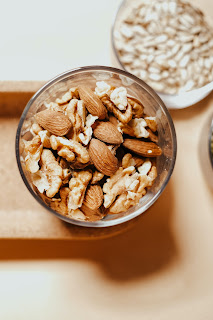what is polyphenols
Purified, concentrated and expertly blended by a long-established UK manufacturer, the all-natural ingredients are absolutely free of colors, preservatives, flavor's, fillers or chelating agents. Polyphenols are natural phytochemicals found in healthy foods, and a diet rich in polyphenols has been linked to a reduced risk of chronic diseases such as dementia, high cholesterol, diabetes and other chronic diseases.
Hundreds of different polyphenols are known to humans, and attempts have been made to classify them, although their properties overlap and they are present in more or less concentrations in various foods.
Why do you need polyphenols?
A lack of polyphenols was not associated with specific side effects. However, they are considered "essentials for life" because they reduce the risk of chronic disease.
Studies have shown that people whose diets are high in polyphenols -- more than 650 milligrams per day -- have a lower risk of death than those who eat less than 500 milligrams per day.
 |
| fruits and vegetable contain polyphenols image credit pexels |
Here are a few examples of the greater, typically identified categories:
Carotenoids:
Beta-carotene (carrots, peaches, apricots, spinach, and cantaloupe)
Alpha-carotene (carrots and pumpkins)
Cryptoxanthin (oranges, papaya, peaches, and tangerines)
Lycopene (tomatoes, chilli, watermelon, and purple grapefruit)
Lutein (Spinach kale, crimson pepper, Okra)
Zeaxanthin (corn, broccoli, spinach, crimson pepper, peas, kale, celery)
Natural Monopherols:
Apiole (parsley)
Carnosol (Rosemary)
Dillapiole (Dill)
Organosulfides:
Isothiocyanate and its metabolite sulforaphane (Bruceli)
Diallyl disulfide (garlic)
Flavonoids
Isolavone phyooestrogens, e.g. Daidzein, Genistein, Glycitein (Soy, peanuts, leguminous)
Flavonols, such as Kaempferol (found in broccoli and other cruciferous greens)
Catechin (cocoa and chocolate) is an example of a flavanol polymer.
Flavan-3-ols (epigallocatechin gallate (EGCG)-inexperienced tea)
stilbenoids, such as resveratrol (grapes and red wine)
Phenolic Acids:
Chlorogenic acid (coffee)
Ellagic acid (pomegranates, raspberries, and strawberries)
Benzoic acids (hydroxybenzoic acid, gallic acid)
Cinnamic acid (apples, wheat, artichoke)
Salicylic acid (bark of willow timber, maximum fruit and veg)
Nonflavonoid phenolics
Curcumin is a root herb.
Capsaisin-chilli
Piperine-pepper
highest polyphenol Food
Berries are low in energy but high in vitamin C, fiber, and polyphenols, making them a nutritious addition to any diet. Chokeberries and elderberries have the very best amounts, with 1,123 and 870 milligrams of polyphenols in keeping with a half-cup serving, respectively. Many different, not uncommon berries have an excessive amount of sugar content in keeping with half a cup as well, including: Blueberries have 535 milligrams Blackcurrant, with 485 milligrams Blackberries, raspberries, and strawberries have approximately one hundred sixty milligrams.
 |
| image credit pexels |
Cocoa Powder While you have to restrict your sugar intake, cocoa powder is a robust polyphenol supply with 516 milligrams per tablespoon. However, heating and processing cocoa powder to make chocolate merchandise can lessen this content. For example, dark chocolate has 249 milligrams per tablespoon, whilst milk chocolate has simply 35 milligrams.
 |
| Cocoa Powder contain polyphenols image credit pexels |
Nuts Although nuts are a healthy way to include fiber, protein, and essential fatty acids in your diet, you must moderate your portions due to their high energy content. Most nuts contain polyphenols; however, chestnuts top the list with 347 milligrams per ounce — about 3 nuts.Other top selections consist of hazelnuts and pecans with one hundred forty milligrams and almonds with fifty-three milligrams for a one-ounce serving.
 |
| nuts contain polyphenols image credit pexels |
Flaxseed is now and then used to enhance digestion and relieve constipation. Along with their excessive fiber content, in addition, they have 229 milligrams of polyphenols according to a tablespoon.
 |
| Flaxseed image credit pixabay |
Olives are rich in vitamin E, fatty acids, and polyphenols. 20 grams of black olives (about 5 olives) contain 113 mg of polyphenols, while the same serving of green olives contains 70 mg.
 |
| Olives are rich in vitamin E image credit pexels |
It is obvious from this listing that ingredients with the very best polyphenol content material include, herbs, spices, teas, fruit, greens berries, prunes, flaxseed, linseeds, nuts, darkish greens, cruciferous, brightly colored greens, berries, culmination and grains and nuts. The aggregate of pomegranate, inexperienced tea, turmeric and broccoli may want to assist beat numerous most cancers killers.

.jpg)
%20(1).png)


.jpg)

0 Comments
Thank you for your comment